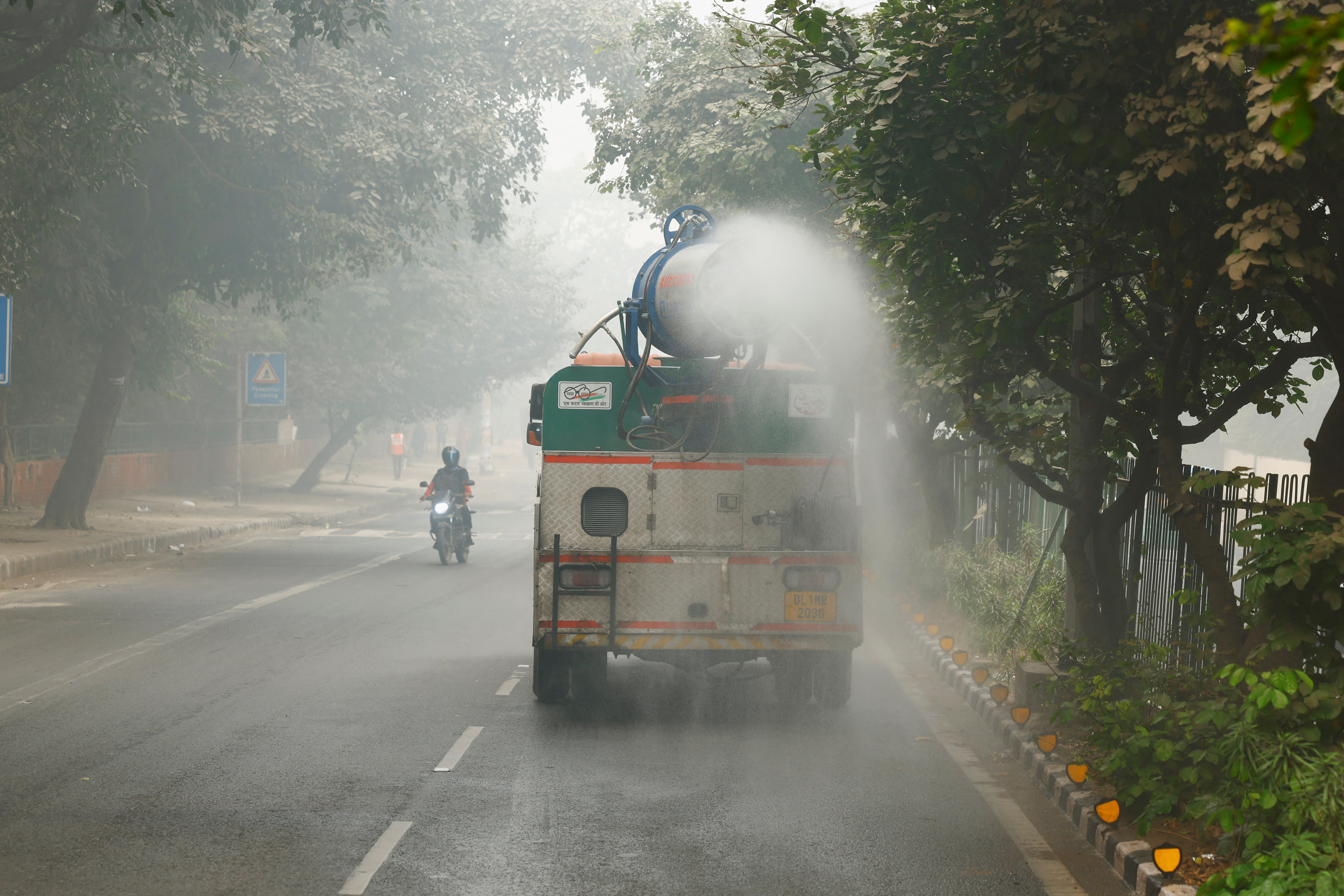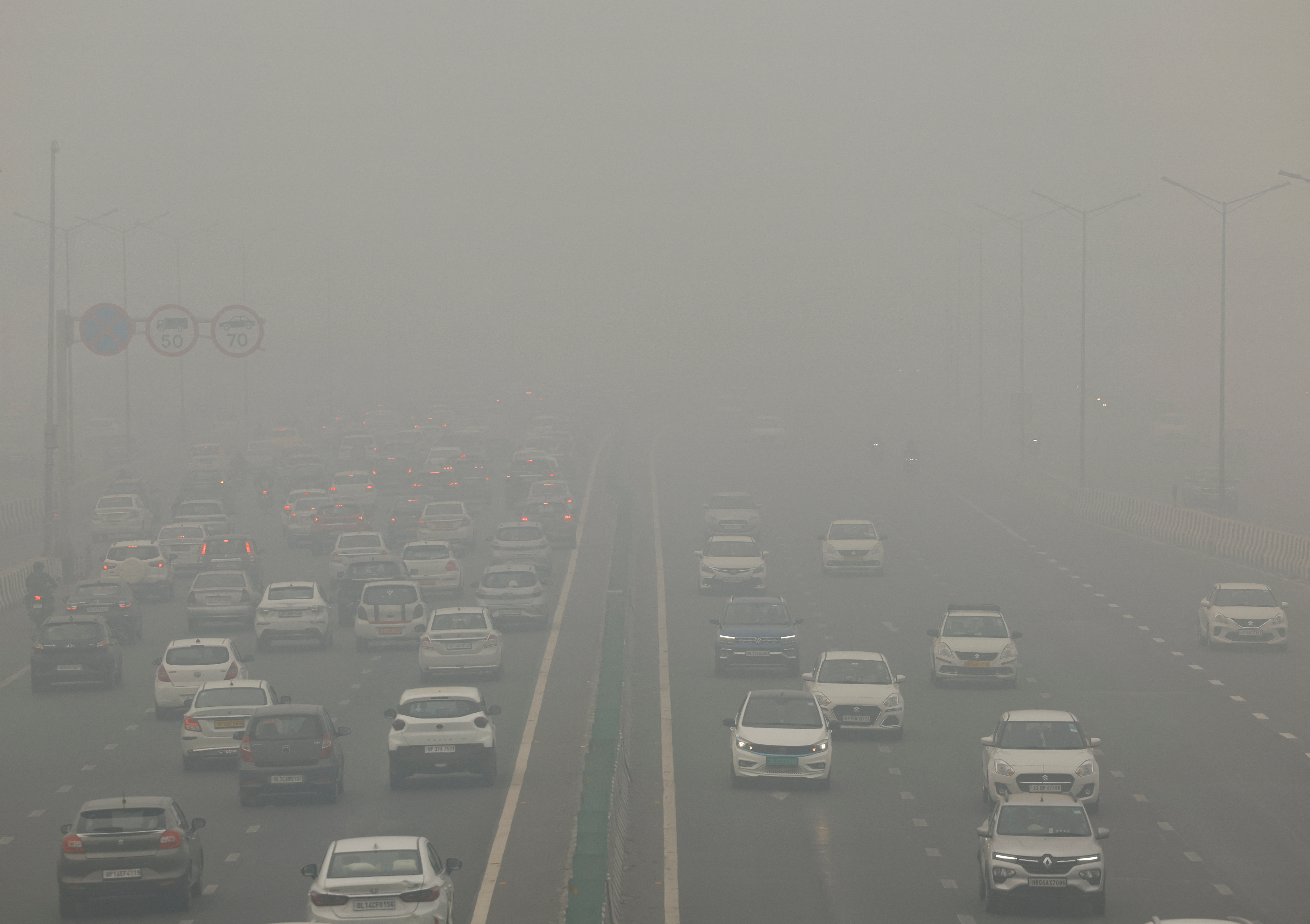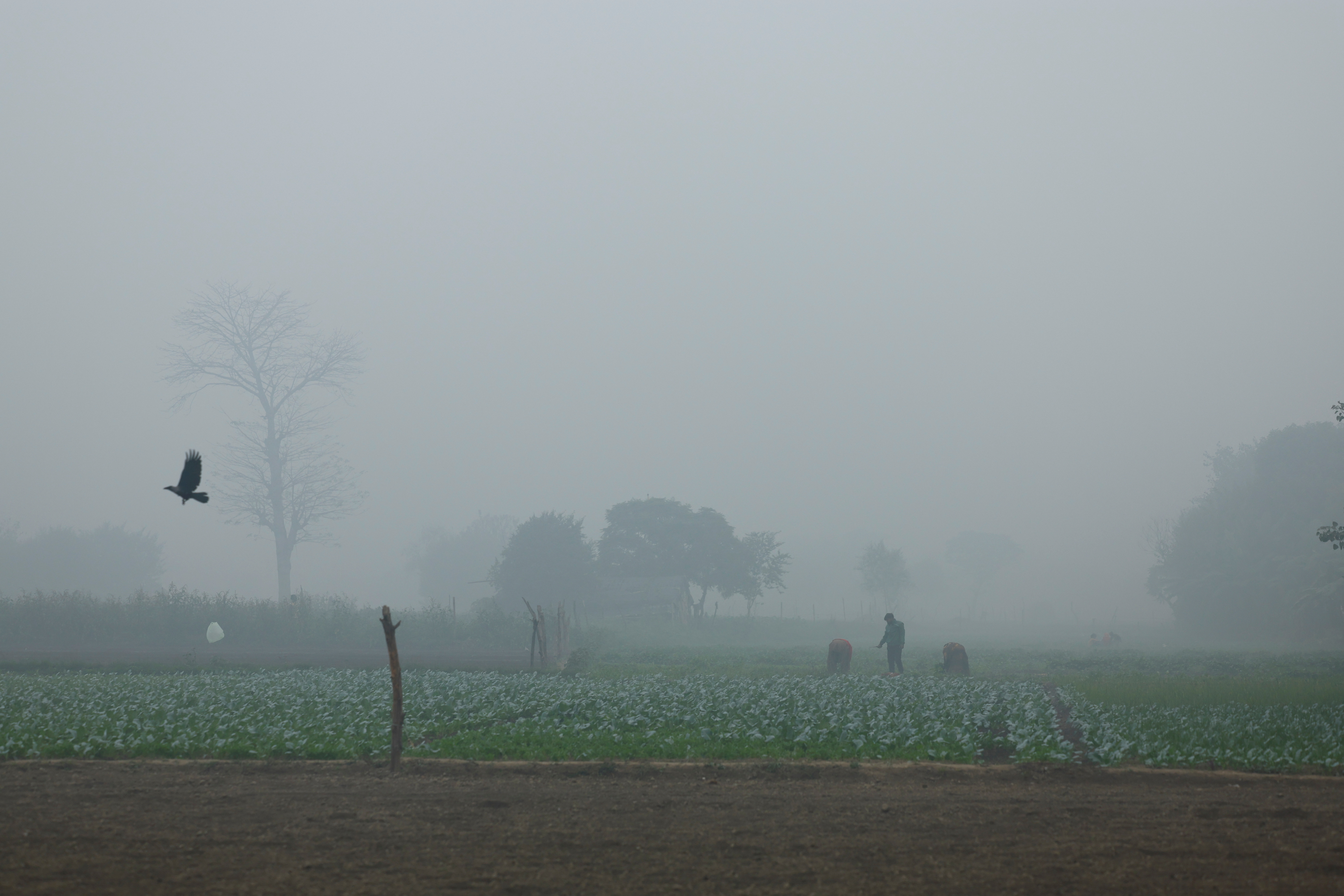People ride on a boat on the river Yamuna, as the sky is enveloped with smog after Delhi’s air quality turned “hazardous” due to alarming air pollution, in New Delhi, India, November 18, 2024. REUTERS

A vehicle sprays water to curb dust and pollution as the sky is enveloped with smog after Delhi’s air quality turned “hazardous”, in New Delhi, India, November 18, 2024. REUTERS

Traffic passes on a road as the sky is enveloped with smog after Delhi’s air quality turned “severe” due to alarming air pollution, in New Delhi, India. REUTERS

People work on a field as the sky is enveloped with smog after Delhi’s air quality turned “severe” due to alarming air pollution, in New Delhi, India, November 18, 2024. REUTERS
- Delhi pollution hits season-high
- The city’s chief minister calls it a ‘medical emergency’
- Visibility drops, Delhi flight operations affected
- Residents complain of burning eyes, breathing difficulties
- Such pollution can hurt Indian growth story, economist warns
NEW DELHI, Nov 18 (Reuters) – Toxic smog engulfed much of northern India on Monday and pollution readings in New Delhi hit their highest of this pre-winter season, after dense fog overnight.
Visibility dropped to 100 metres in the capital and at least eleven flights were diverted. Operations at airports and railway stations continued, but with delays, officials said.
Delhi’s chief minister Atishi, who goes by only one name, called the situation in northern India “a medical emergency”.
“For any responsible government in India, the top priority should be pollution control in cities like Delhi,” economist Kaushik Basu said in a post on social media platform X.
Atishi’s government has directed all schools to move classes online and tightened restrictions on construction activities and vehicle movements, but despite the polluted air, many Delhi residents continued their daily routines.
“Morning walk usually feels good, but now the air is polluted and we’re forced to wear a mask … There is a burning sensation in the eyes and slight difficulty in breathing,” Akshay Pathak told the ANI news agency.
The winter blanket of smoke and fog descends each year as cold air traps dust, emissions and smoke from illegal farm fires, where stubble left after harvesting rice is burnt to clear fields in surrounding states.
“In addition to diminishing the quality of life, this kind of pollution, left unchecked, can bring India’s growth story to an end,” Basu said of the problem.
India’s Supreme Court, which has been hearing cases on tackling the problem, directed all states in the Delhi region to immediately take a call on suspending offline classes for students up to grade 12, legal news website Livelaw reported.
Delhi’s 24-hour air quality index (AQI) reading was at 491, classified as “severe plus”, the highest this season, India’s pollution control authority said.
By afternoon, the AQI in at least four stations in Delhi had touched 500, with many others between 490-500. India’s weather department has forecast similar conditions on Tuesday as well.
India’s Central Pollution Control Board defines an AQI reading of 0-50 as “good” and above 401 as “severe”, which affects healthy people and “seriously impacts” those with existing diseases.
Farm fires this season have contributed as much as 40% of Delhi’s pollution, SAFAR, a weather forecasting agency under the ministry of earth sciences has said.
Swiss group IQAir ranks New Delhi as the world’s most polluted city with air quality at a “hazardous” 1,081.
The concentration of PM2.5 – particulate matter measuring 2.5 microns or less in diameter that can be carried into lungs, causing deadly diseases and cardiac issues – was 130.9 times the World Health Organisation’s recommended levels, it said.
Experts say the scores vary because of a difference in the scale countries adopt to convert pollutant concentrations into AQI, and so the same quantity of a specific pollutant may be translated as different AQI scores in different countries.
Reporting by Tanvi Mehta, Editing by Kate Mayberry, YP Rajesh and Alexander Smith








